I wrote something short to go here. The gist of it was that the days between frozen winter and thawed spring are the coldest of the year; every hope for warmth and a new season, cancelled by dumps of spring snow and cold fronts. But when I came downstairs in darkness this morning, a cardinal was singing so loudly that I had to stop and listen. To the east, dark sky hugged the horizon, blocking all but a thin sliver of light—a window shade against the growing day. I needed that example. The cardinal, and what I could only describe as optimism, out there in the bush freezing its tail off, loving every minute of it.
Speaking of things to love, what I usually hear about these doughnuts is that they’re “unlike any doughnut I’ve had before.” All the instructions, steps, and pictures are below. Please reach out if you have questions. And please reach out, even if you don’t have questions. Community is wherever we make it, bakers. Holler anytime.
Martin
A couple quick notes about the process. These doughnuts are mixed on day one then placed in the fridge to rise overnight in bulk. On day two, you’ll roll the dough then cut, proof, and fry. To fill, my preference is chocolate pastry cream but any flavor that pairs with chocolate will be great. Make the pastry cream in advance (or buy good chocolate pudding) and have it chilled down and ready by the time the doughnuts are frying. If you like these, you might also consider spiced doughnuts I wrote.

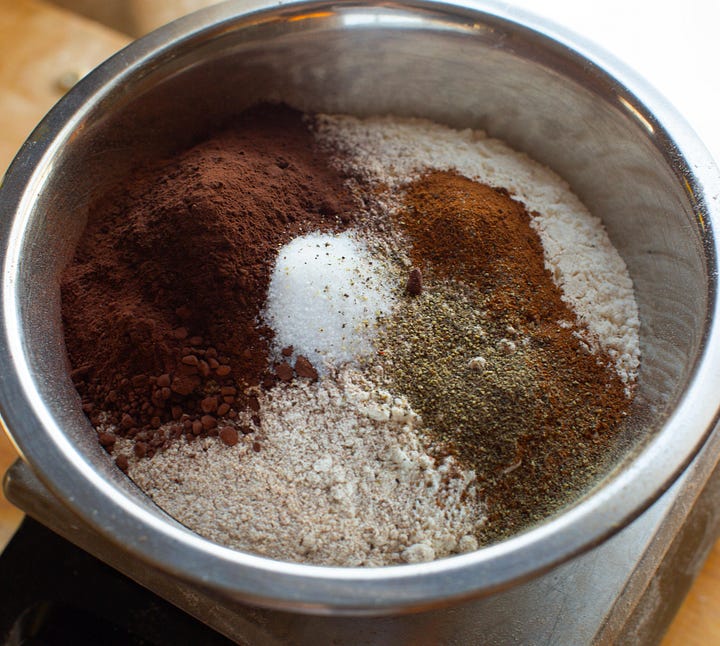
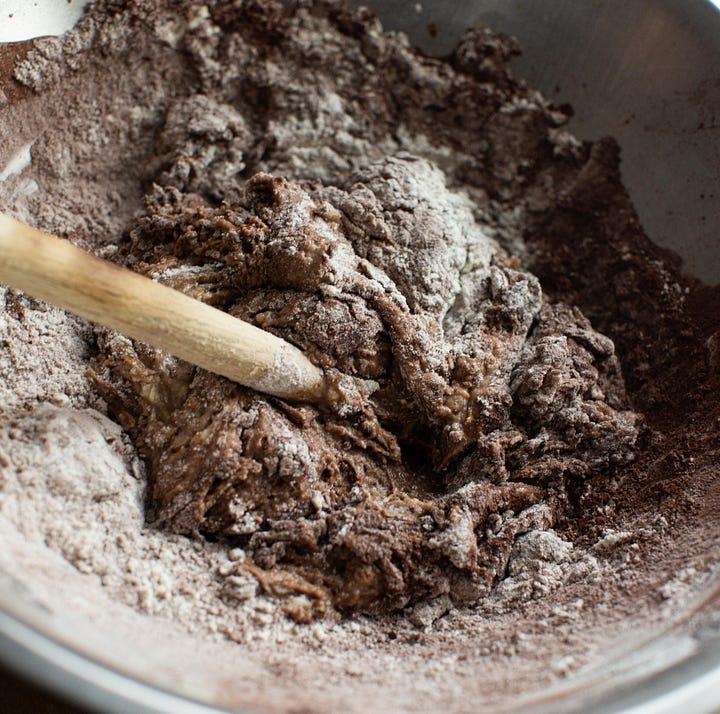
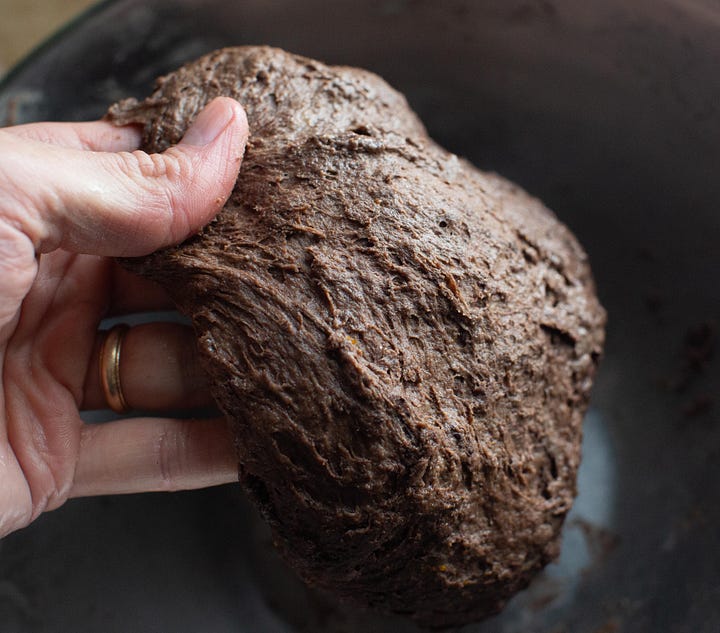
Chocolate Bomboloni
Yield: 16 to 18 small doughnuts
Milk, warm (95 to 105°F), 155g
Butter, soft, 28g
Yeast, dry, instant, 4.5g (1 ½ t)
Sugar, granulated, 48g
Egg, whole, 50g (1 large), room temperature
Sourdough culture, 75g*
Vanilla, 6g (1 t)
Molasses, 6g (1 t)
In a large bowl, whisk everything together until mostly homogenous. Set aside while gathering the remaining ingredients. Mixing these ingredients before adding the flour will ensure that the yeast and sugar are hydrated.
*For the culture, use discard or make a preferment with the following ingredients: 15g culture, 30g all-purpose, 30g water. Set to mature for 8 to 16 hours before use. If you don’t have sourdough, prepare the preferment substituting 1g or 1/4 t of yeast for the sourdough culture. Ferment for 8 to 16 hours before use.
All-purpose flour, 270g
Whole wheat, rye, or spelt flour, 30g
Salt, 6g (1 t)
Nutmeg, 2.5g (1 t)
Pepper, black, 0.5g (¼ t)
Cinnamon, 2.5g (1 t)
Cocoa, dark, 27g
Add the dry ingredients to the wet and stir to combine. The mixture will be soft and sticky. Once mixed, switch to a flexible scraper, pressing and folding in the bowl until fully homogenous. Move the dough to a lightly greased bowl or 2-quart container with a lid and set in a warm spot for bulk fermentation.
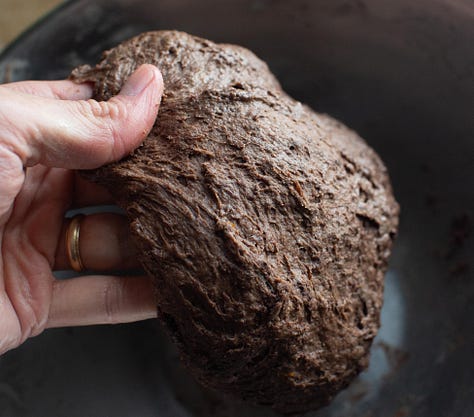
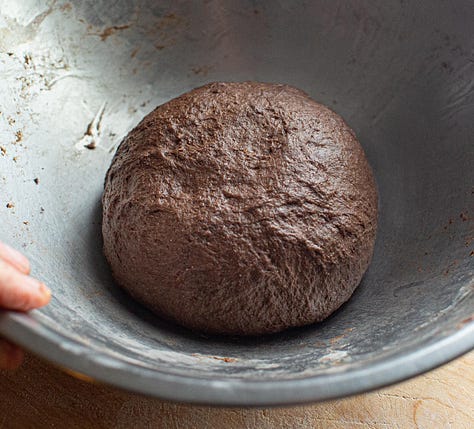

After both 15 and 30 minutes of rising, perform a bowl fold or knead briefly in the container. Cover and chill the dough overnight.
On day two dump the dough onto a lightly floured surface. Lightly flour the top then press with your hands to degas and flatten. Switch to a rolling pin, flouring the top and underneath as necessary to prevent sticking, working the dough into a smooth, even circle about 11” in diameter and 3/8” thick.
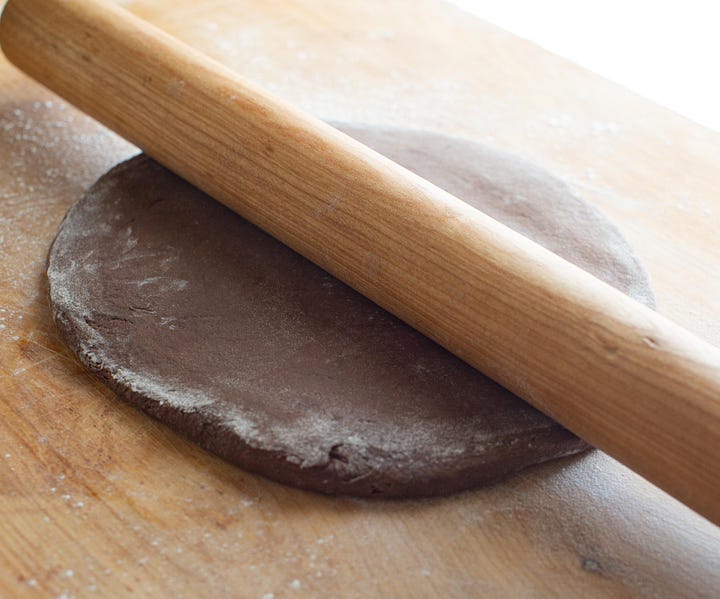
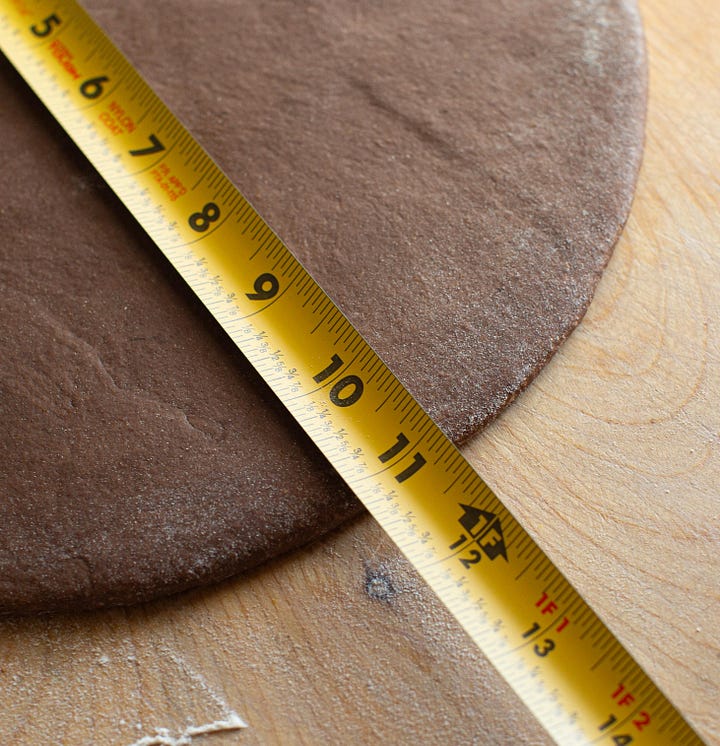
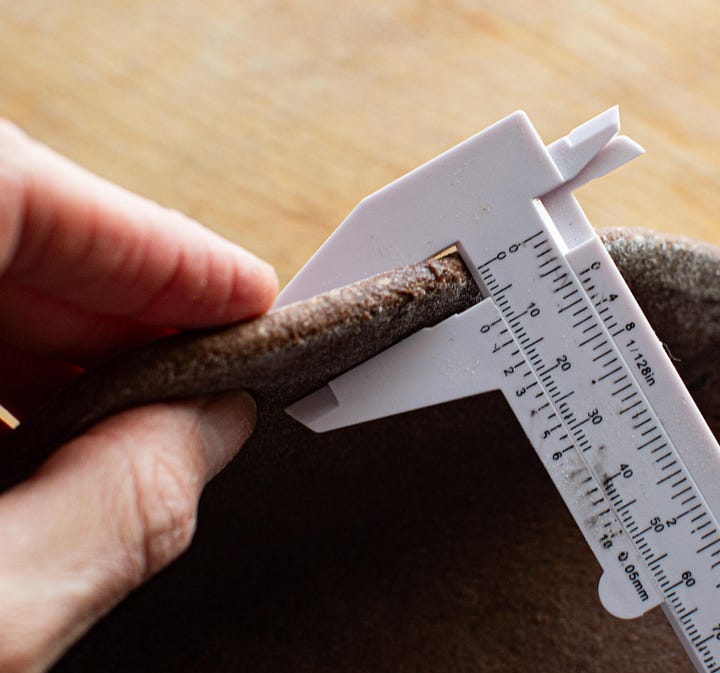
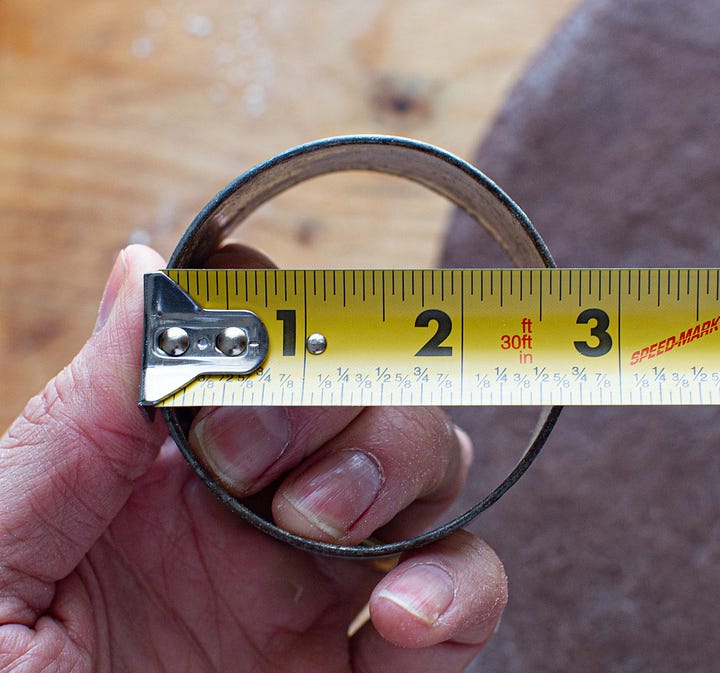
Cut circles to a desired size. I prefer a 2 3/4” biscuit cutter. For the scraps, press the pieces gently into a single layer, trying to avoid working them too much, then cut into rounds. The later cuts won’t be as nice as the first pass but they will still be delicious. I usually just eat those pieces plain (meaning, I toss in sugar but skip the filling).
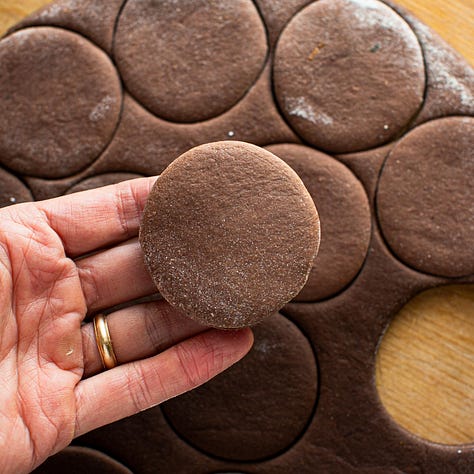
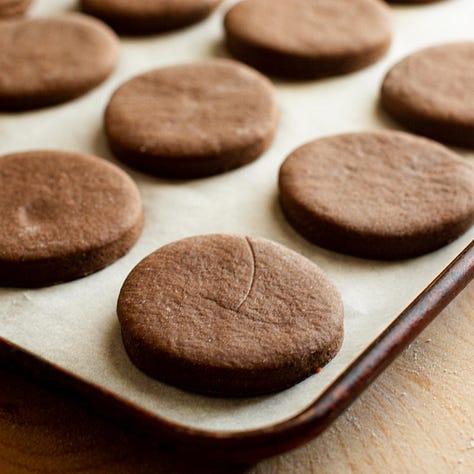
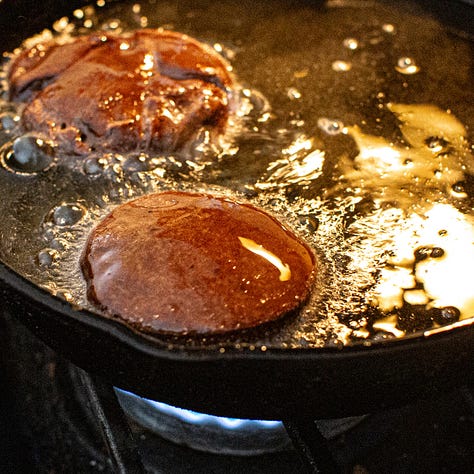
Place the pieces on a parchment-lined sheet tray (lightly flour or spray the parchment with pan spray to ensure they will release easily). Cover and set to rise until puffy, 60 to 75 minutes.
Oil, vegetable, 650g (three cups)
Towards the end of the rise, heat the oil in a small pan or pot to 350°F. For this doughnut size I like to use a 9” cast iron pan. A larger pan will work but may require more oil.
Sugar, granulated, 72g
Cinnamon, 2.5g (1 t)
Cocoa, dark 4g (2 t)
Salt, fine, 1.5g (1/4 t)
While the oil heats, stir together the finishing sugar in a small bowl.
Also get your frying setup ready at the stove. I like to use a half sheet tray lined with paper towels with a cooling rack set on top. I place it on the stovetop adjacent to the fry oil to minimize drip or spill. For tools, have a slotted metal spoon or spider at hand as well as a large kitchen spoon.
To fry, load three pieces at a time, gently lowering them into the oil. As soon as they are in I ladle hot oil over the tops—maybe it’s unnecessary but it does seem to help me cook them evenly. Once the bubbling slows, around 1 1/2 minutes in, turn them over with a slotted spoon and fry on the second side for another 1 1/2 to 2 minutes. Prick any large bubbles that might appear on the surface.
Remove from the oil and place on the cooling rack to cool very briefly (10 to 15 seconds) before tossing in the sugar. If you wait too long to toss, the sugar will not stick to the outside. My method for tossing is to place each doughnut into the sugar then shimmy the bowl, turning the doughnuts as necessary to ensure full coverage. After adding the sugar, try to handle them as little as possible in order to avoid blemishes or finger marks on the sugar coat. Cool briefly before filling.
To fill the doughnuts, place the chilled pastry cream (recipe below) into a piping bag fitted with either a small tip or filling tool. Alternatively, if you have disposable piping bags, cut an opening roughly 1/4” to 3/8” in size.
Using a chopstick or similar instrument, poke into the doughnut, moving it around to create a pocket without rupturing the doughnut wall. Next, to ensure that each doughnut receives its portion of cream, place a doughnut on a scale and tare, then fill, then weigh again to confirm a cream amount of roughly 20g per doughnut (again, these were cut to 2 3/4”; if you cut larger, increase the filling proportionately).
Chocolate pastry cream
Milk, whole or 2%, 225g
In a small pot bring the milk to a simmer.
Sugar, granulated, 48g
Cornstarch, 18g
Salt, fine, 1.5g (1/4 t)
Eggs, 75g (about one large plus one yolk)
While the milk heats (keep a close eye on it), stir together the sugar, cornstarch, and salt in a medium bowl. Add the eggs and whisk until homogenous.
Add half the warm milk to the egg mixture to temper it. Whisk vigorously to combine, then whisk the tempered milk and yolk mixture back into the pot.
Return to low heat and stir constantly until thickened. Note that the small batch size will require extra attention to ensure that it remains smooth. If you have any problems, run it through a fine sieve before adding the remaining ingredients.
Butter, 14g (1T)
Vanilla, 8g (2 t)
Chocolate, dark, 57g (I’ve been using a 61% semi-sweet)
Cinnamon, 2.5g (1 t) (optional)
Remove from the heat and stir in the butter, vanilla, chocolate, and cinnamon, whisking until the chocolate melts and the mixture is homogenous. Chill until use.
Cream, heavy or whipping, 15g
Pour the cold cream onto the cold pastry cream and whisk until it lightens, a minute or so. Note that the pastry cream may require some elbow grease to smooth out. The texture is deliberately firm, a better consistency for piping. Place in a piping bag and chill until use.

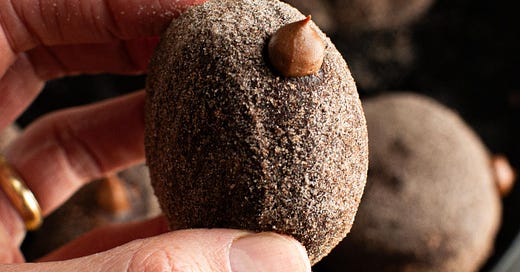

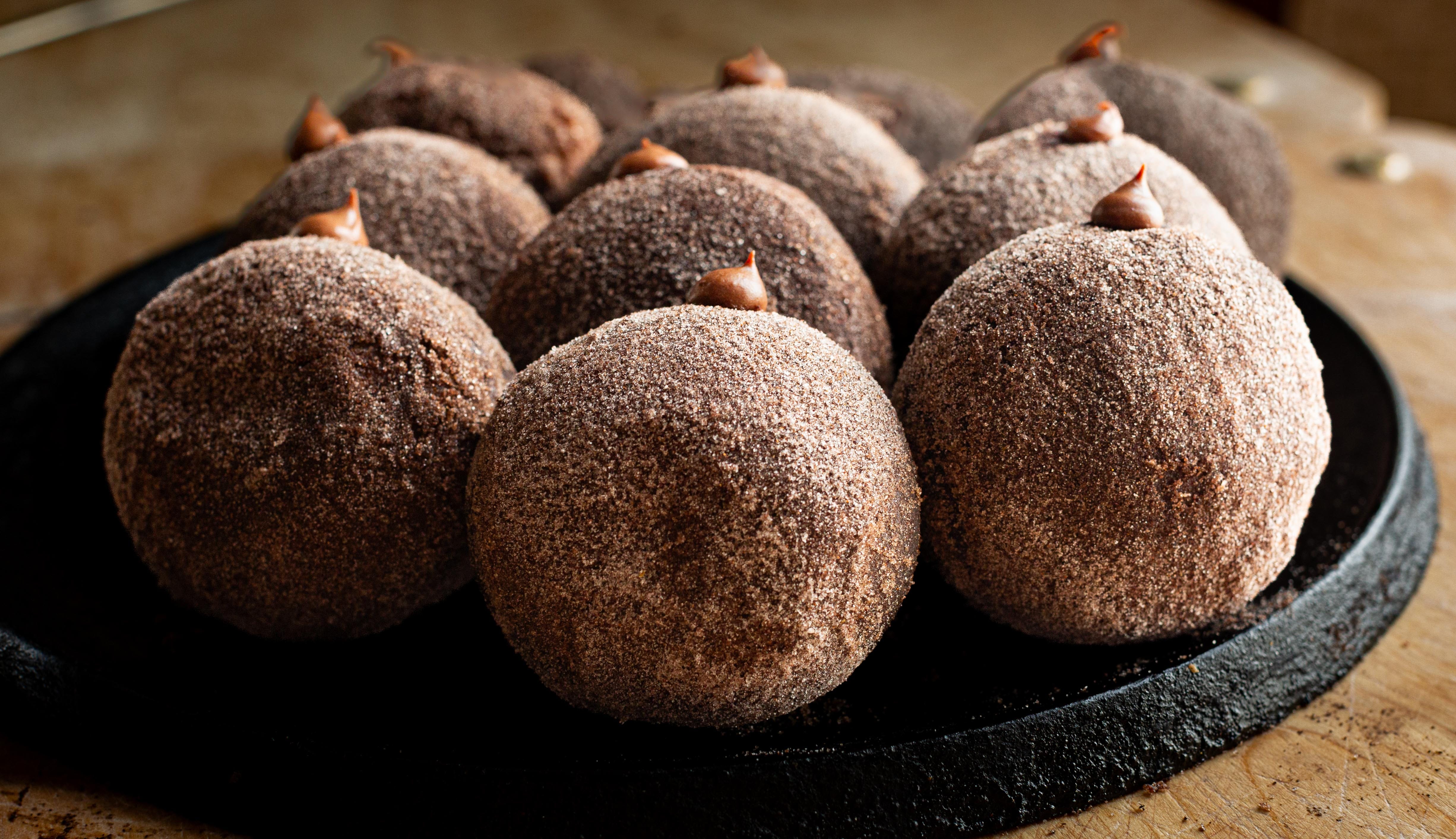
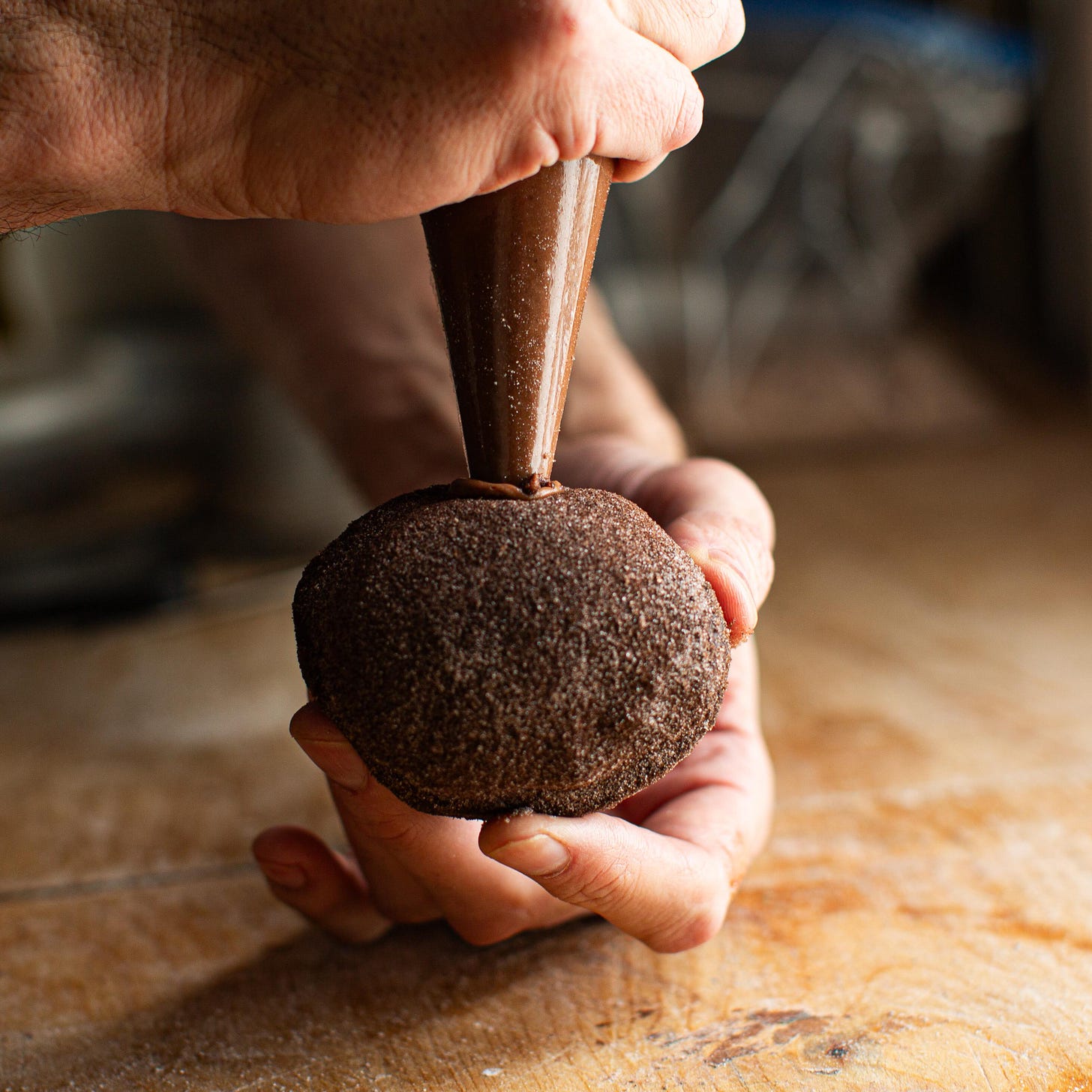
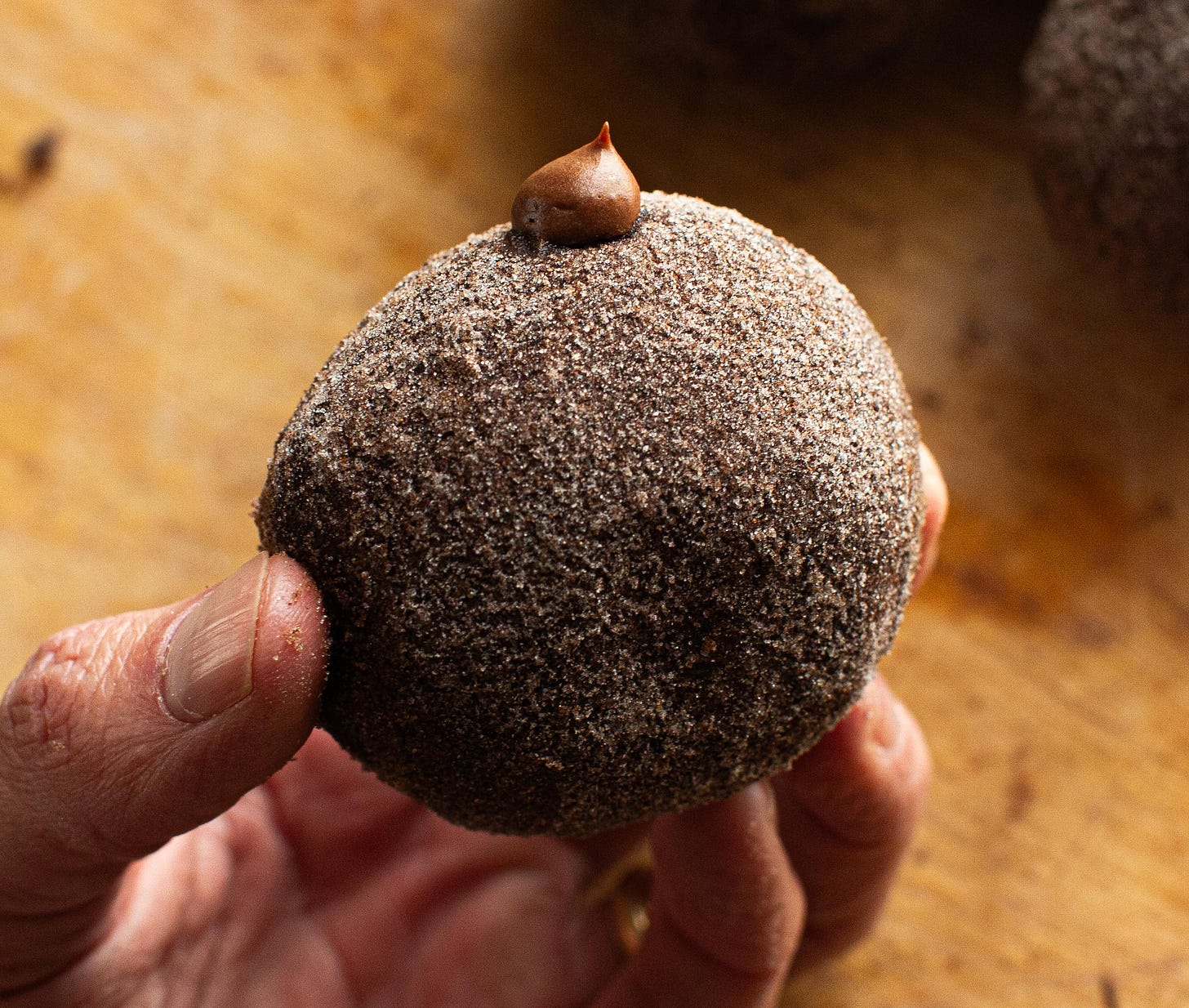
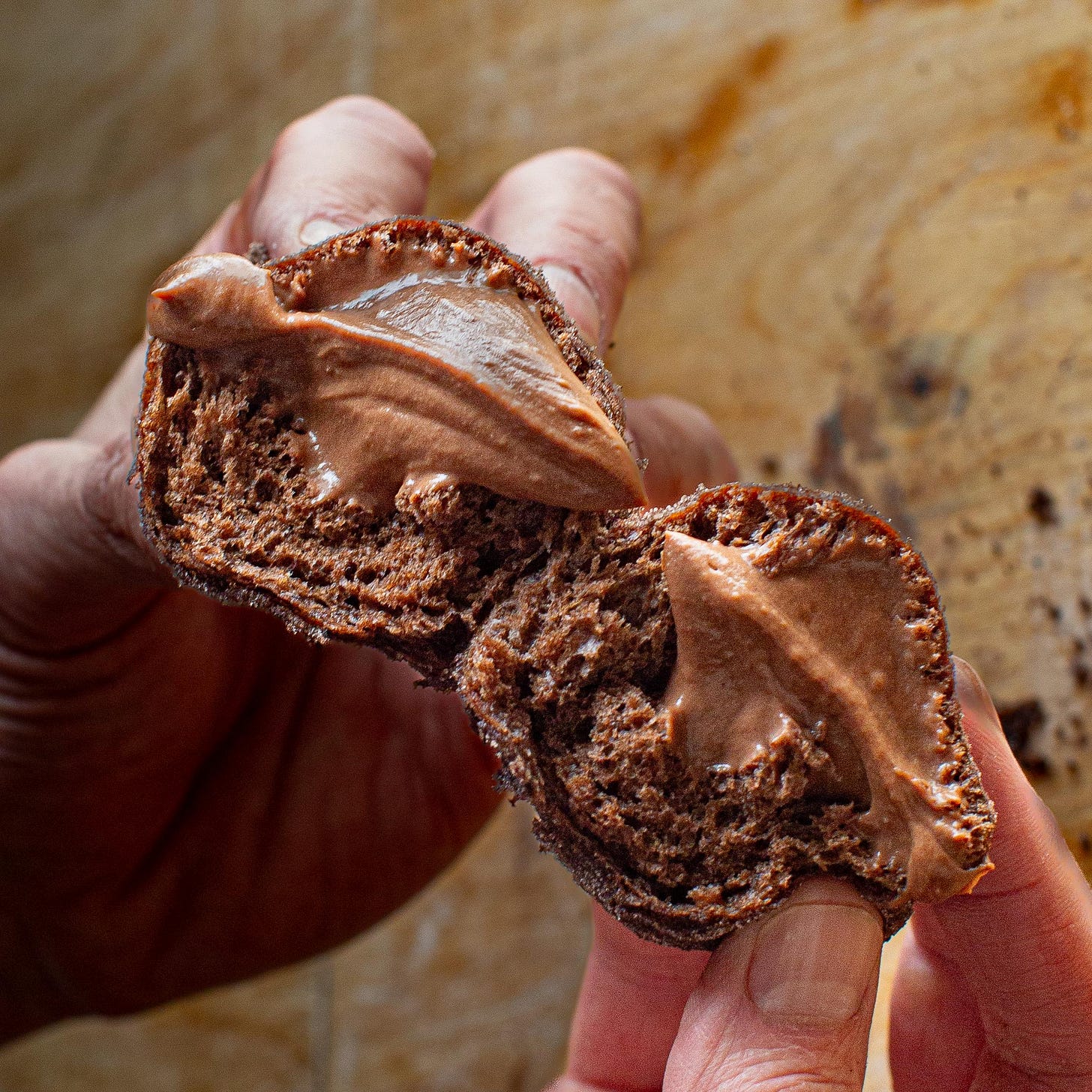
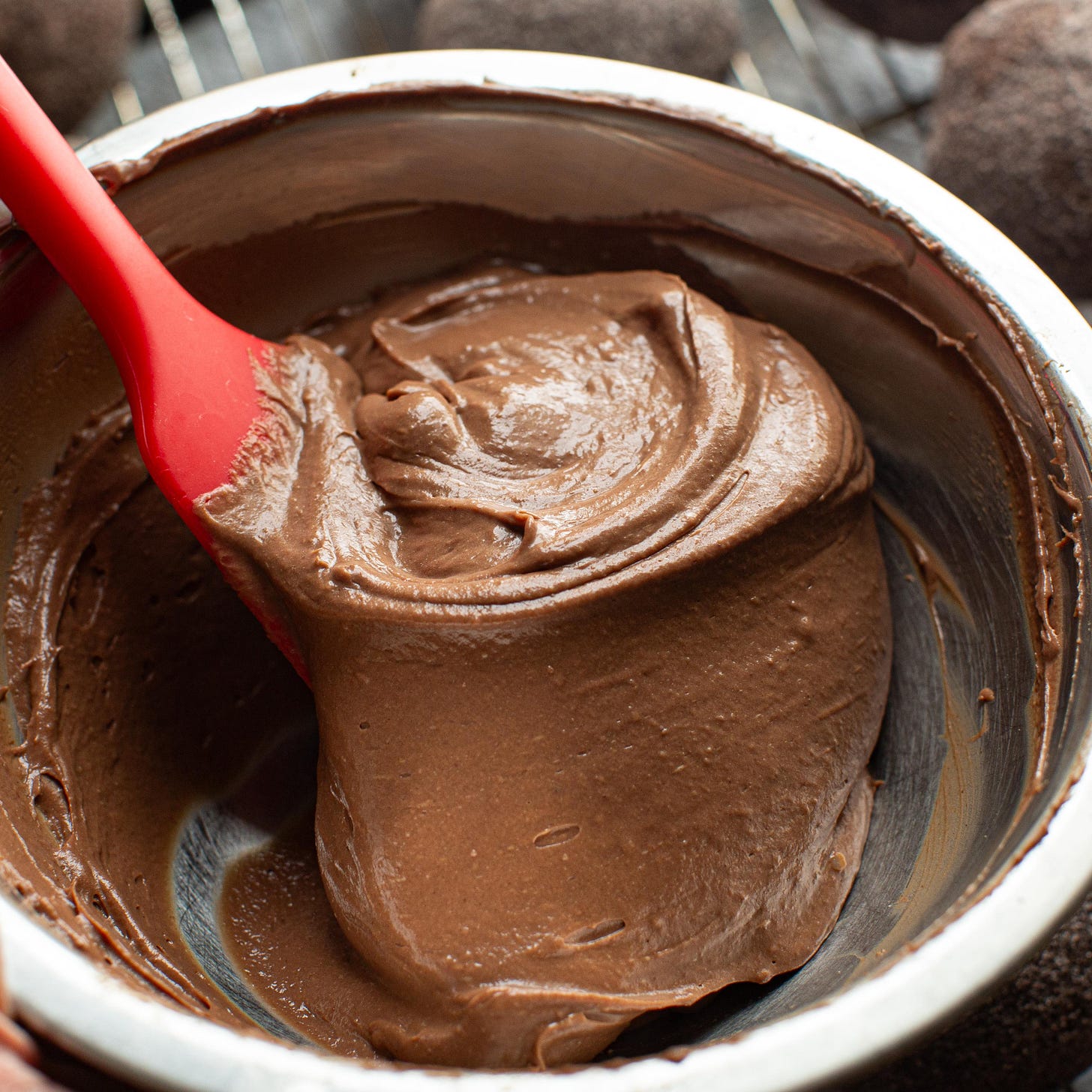
These look so yum! Thank you for sharing!! (And i appreciate you taking the time to show the measurements.)
Okay these look AMAZING! How do you recommend storing these (that is if they are not all devoured as soon as they’re done)